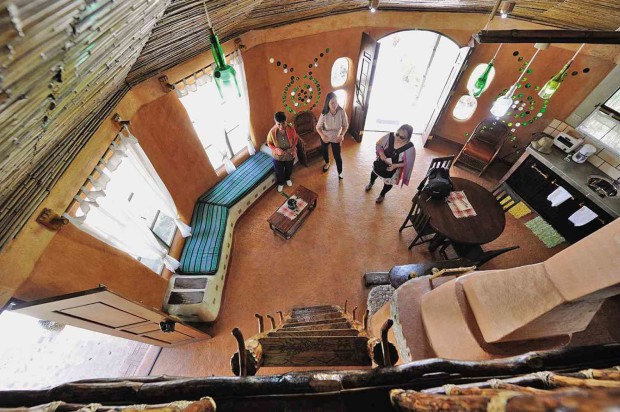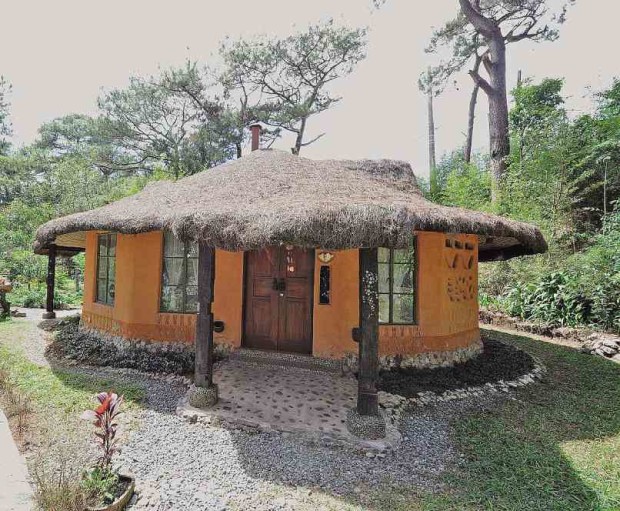Building the earth house the ‘bayanihan’ way

FOR A LITTLE more than P500,000, the Maryknoll Ecological Sanctuary in Baguio City built its very own Earth House. EV ESPIRITU
If you think home-building the “bayanihan” way went out when the overseas Filipino workers began sending money to have sturdier homes made of concrete and GI roofing, think again.
The Maryknoll Ecological Sanctuary (MES) in Baguio City, over a 10-month period, built its earth house covering 82 sq.m. at a cost of a little more than P500,000 without buying the usual materials from lumberyards and hardware stores.
In keeping with the sanctuary’s mission to be responsible earth stewards, Emma Villanueva, tasked with overseeing the building of the house, used three ecologically sound building techniques:
Affordable techniques
Cobbling, wherein earth, sand and fiber (wood shavings or rice straws) are mixed to produce building material that is as strong as cement for the walls.
Article continues after this advertisementSandbagging, wherein regular, moistened soil is stuffed into sandbags, tamped to flatten the bags and laid the way hollow blocks are laid. These are plastered with a mixture of lime and earth for the benches in the living area and bedrooms.
Article continues after this advertisementUse of adobe bricks for the bar counter.
Villanueva described these as “affordable techniques” with the soil coming from the foundation that the builders dug. She said, “It’s earth-friendly. The soil is just there underfoot. It’s minimally processed and plentiful. Think of it—you can get it anywhere.”
She described the plaster on the walls as made of white clay. The exterior is made water-resistant, “but the walls are porous, they can breathe and are cool. Any moisture that goes in comes out. If the temperature changes or the heat goes out, it can be released. It isn’t trapped inside. When it’s cold outside, it’s warm inside and vice versa.”
The house was built bayanihan-style with the MES employees, their families, friends, the Maryknoll sisters, even children and a few hired workers pitching in. Elizabeth Lolarga, contributor
